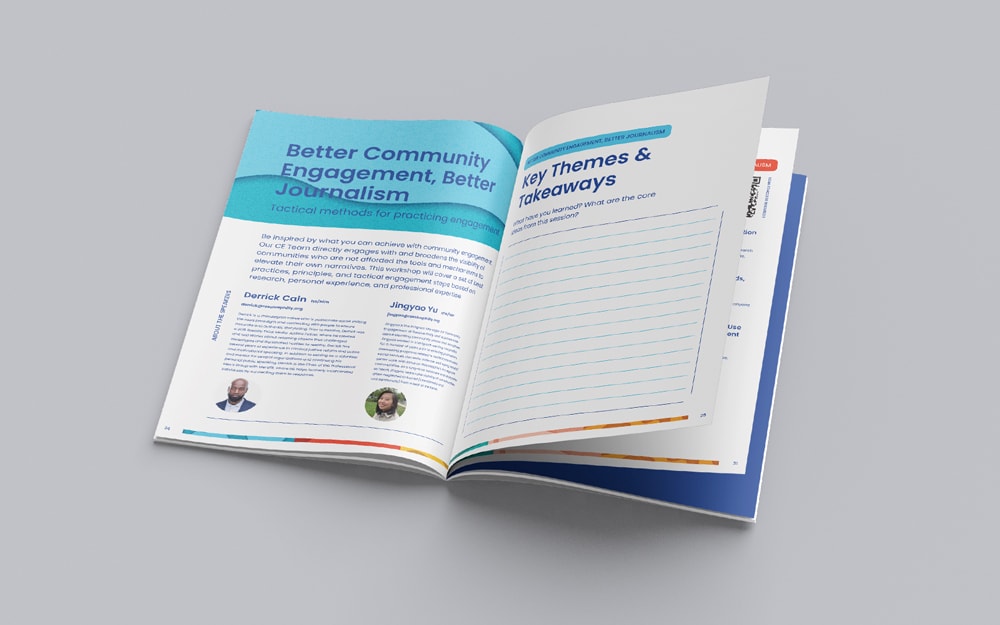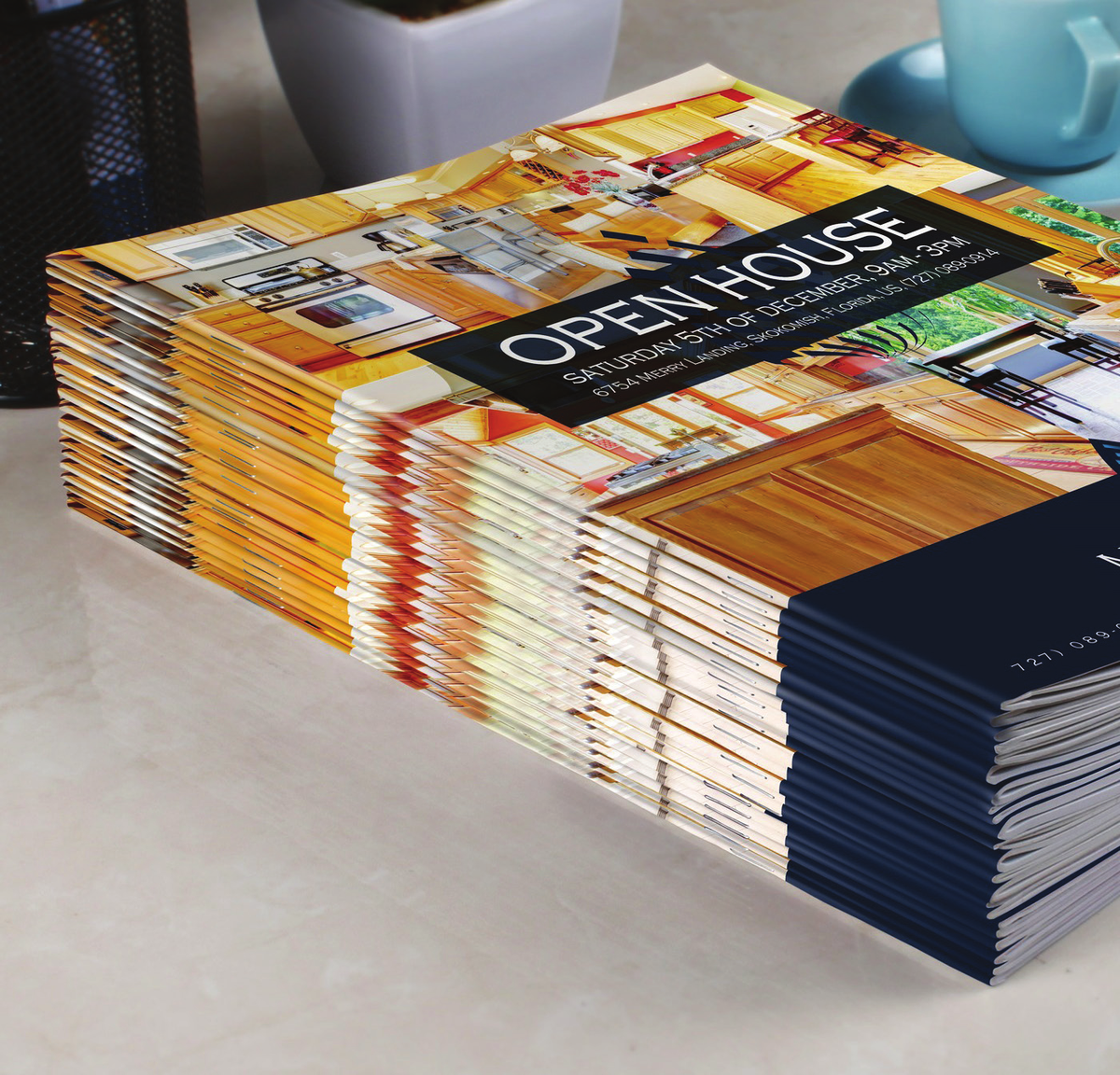The Most Common Mistakes to Avoid in Your Booklet Printing Design
Wiki Article
The Essential Overview to Understanding Booklet Printing Options and Techniques
The procedure of pamphlet printing includes numerous considerations that can substantially impact the final product. From selecting the proper layout and dimension to recognizing the subtleties of binding methods, each selection plays an important role. Furthermore, factors such as paper stock and printing methods more influence the efficiency of the booklet. As one browses these choices, it comes to be essential to grasp how they interconnect and what that indicates for the total result.Recognizing Brochure Styles and Sizes
When taking into consideration brochure printing, comprehending the different layouts and dimensions offered is essential for accomplishing the wanted discussion. Brochures can be produced in numerous styles, including saddle-stitched, spiral-bound, and perfect-bound, each offering distinctive benefits. Usual sizes vary from standard letter (8.5 x 11 inches) to smaller sized alternatives like A5 (5.8 x 8.3 inches), enabling for flexibility based on material and target audience.Selecting the appropriate dimension can influence both the design and viewers interaction. Larger dimensions could fit aesthetically driven material, while smaller sized layouts might be more portable and user-friendly. In addition, the variety of pages influences the option of binding technique, as thicker booklets may require stronger bindings. Eventually, understanding these elements permits a much more tailored strategy, guaranteeing that the final item lines up with the intended message and visual, boosting the general effectiveness of the communication.Choosing the Right Paper Stock

Binding Methods: Options and Considerations
When it concerns binding methods for brochures, several alternatives are readily available, each with distinct advantages. Saddle stitch binding provides an affordable remedy for thinner brochures, while ideal binding methods offer a more polished search for thicker publications. Wire-O binding stands apart for its toughness and convenience of use, making it suitable for papers that need adaptability.Saddle Stitch Binding
Saddle stitch binding provides a useful and affordable solution for setting up pamphlets, making it a preferred choice amongst publishers and businesses. This binding technique includes folding sheets of paper in half and stapling them along the fold line, creating a organized and cool appearance. Generally ideal for booklets with a reduced page matter, saddle sewing is perfect for magazines, sales brochures, and educational products. The simpleness of this method enables quick production and is frequently preferred for promotional products or short runs. Nonetheless, it is important to keep in mind that saddle stitch binding might not appropriate for thicker pamphlets, as the spine may not stand up under boosted weight. Overall, it continues to be a reliable alternative for many printing jobs.Perfect Binding Methods
Perfect binding is an extensively used method that offers a sleek and professional finish to magazines and brochures. This technique includes gluing the pages with each other at the spinal column utilizing a strong adhesive, enabling for a clean edge and the ability to hold a larger number of pages compared to saddle stitching. Perfect binding is especially appropriate for thicker brochures, such as magazines and annual records, where a strong, flat spine is desired. Furthermore, it provides the option for a printed cover that can be designed to boost visual allure. Considerations such as web page count, paper weight, and the planned use of the pamphlet ought to be taken into account, as they can impact toughness and overall high quality.Wire-O Binding Alternatives
Wire-O binding, understood for its toughness and flexibility, offers a superb alternative for brochures that need simple web page turning and a specialist look. This binding technique utilizes a collection of metal loopholes that hold pages safely, allowing them to exist level when open. It is specifically appropriate for handbooks, directories, and presentations due to its robust nature. Wire-O binding is available in various shades and sizes, fitting various page counts and densities. In addition, it allows the incorporation of covers and tabs, boosting the pamphlet's total aesthetic. Considerations for Wire-O binding include the choice of cable color, the dimension of the loopholes, and the degree of modification preferred, every one of which can profoundly influence the end product's appearance and performance.Digital vs. Offset Printing: Which Is Best for You?
When picking a printing technique for booklets, understanding the distinctions between electronic and counter printing is necessary. Digital printing uses modern technology to generate top quality prints promptly and cost effectively, making it ideal for short runs or projects needing fast turn-around times. It enables personalization, providing the capability to publish on-demand with minimal waste.In contrast, offset printing is a standard technique that excels in creating large amounts with regular high quality. It entails transferring ink from a plate to a rubber covering, then to the paper, which leads to accurate information and vibrant shades. Offset printing normally requires longer configuration times and is extra economical for bigger volumes.Ultimately, the option in between electronic and offset printing depends on task demands, spending plan, and preferred quantity. For tiny, time-sensitive tasks, digital may be the most effective choice, while balanced out might be preferable for larger, top quality productions.
Designing Your Booklet: Tips and Ideal Practices
When designing a pamphlet, mindful interest to design, font option, and color usage can greatly improve its efficiency. A well-structured format guides the visitor's eye, while ideal typefaces assure readability and share the desired tone. Additionally, effective use of shade can stimulate emotions and highlight essential information, making the total layout more impactful.Picking the Right Layout
Exactly how can one successfully select the ideal format for a brochure? Initially, it is vital to assess the booklet's objective and target market. A tidy, organized format improves readability and involvement. Utilizing a grid system can help in straightening aspects regularly, developing a professional look. Additionally, including visual pecking order through differing sizes and placements of photos and text can direct the visitor's eye and stress vital info. It is also vital to leave adequate white area, which prevents congestion and enables for far better emphasis. Examining different layouts with mock-ups can supply understanding right into how the design carries out in real-world circumstances, making certain that the final item satisfies both visual and useful requirements.Choosing Ideal Typefaces
A well-chosen font can substantially enhance the general style of a pamphlet, enhancing the layout and strengthening the web content's message. The option of fonts should take into consideration readability, particularly for body text, as it assures the information is available to all visitors. Sans-serif fonts are often chosen for digital layouts, while serif typefaces can offer a standard feeling in printed products. It's suggested to restrict font options to two or three to maintain visual straight from the source coherence. In addition, typeface size plays a crucial function; headings need to be distinctive yet not frustrating, while body message should be comfortable for reading. When selecting typefaces, positioning with the pamphlet's theme and target market is essential for effective communication and visual charm.Effective Use of Color
Color works as a powerful device in brochure layout, forming perceptions and guiding reader feelings. It can stimulate sensations of depend on, enjoyment, or peace, relying on the colors selected. Developers should think about color theory principles, guaranteeing that the selected palette straightens with the pamphlet's message and target audience. Utilizing cozy shades like red and orange can create urgency, while cooler tones like blue and green foster tranquility.Additionally, comparison plays a vital duty; corresponding shades can boost readability and aesthetic charm. Uniformity in color usage across web pages further reinforces brand name identity and cohesion. Ultimately, effective color execution not only captures focus yet also strengthens the pamphlet's purpose, making it an essential aspect of successful style.
Completing Touches: Coatings and Special Impacts
While many consider the material and design of a booklet one of the most important elements, the finishing touches, such as finishings i was reading this and special results, play a crucial function in boosting its general appeal. Coatings can offer security and longevity, making sure that the brochure holds up against deterioration. Matte surfaces provide an advanced, non-reflective surface area, while shiny coverings can make shades show up more distinctive and vibrant. Unique impacts, like embossing or aluminum foil stamping, include a responsive dimension that can develop a memorable perception. These techniques can highlight specific areas, attracting attention to crucial details or producing visual interest. Furthermore, UV finishing can offer a high-shine coating that elevates the overall look.Together, these ending up touches not only boost the pamphlet's visual but likewise interact expertise and focus to information, eventually leaving a long lasting influence on the viewers.Expense Factors To Consider for Booklet Printing
Recognizing the different price factors to consider for brochure printing is vital for companies and businesses aiming to maximize their budget plans. Trick variables influencing expenses consist of the choice of binding, ink, and paper methods. Better materials, such as superior paper or specialized inks, normally boost the general expense. Additionally, the size and web page count of the brochure play a considerable duty; bigger booklets need more sources and time to produce.Another vital consideration is the printing technique, whether electronic or offset, as each has its very own pricing framework and viability for various quantities. Companies must also consider style costs, which can differ based upon intricacy and the use of professional solutions. Ultimately, delivery and handling fees can include in the total amount, specifically for large orders. By examining these aspects, organizations can make enlightened choices that line up with their economic capacities while attaining the wanted quality in their printed materials.Frequently Asked Questions
What Are the Ecological Impacts of Booklet Printing?
The ecological influences of pamphlet printing consist of logging from paper manufacturing, carbon discharges from transportation, and waste generation from discarded materials - Booklet Printing. Sustainable methods, such as using recycled paper and eco-friendly inks, can minimize these effectsHow Can I Ensure Color Precision in My Pamphlet?
To assure color precision in a booklet, one should utilize calibrated displays, use professional shade accounts, conduct examination prints, and select premium printing services that supply color matching and proofing options for ideal results.What Is the Typical Turnaround Time for Booklet Printing?
The typical turnaround time for pamphlet printing differs depending upon the complexity and amount - Booklet Printing. Typically, it ranges from a couple of days to 2 weeks, affected by factors such as publishing methods and finishing demandsExist Minimum Order Quantities for Brochure Printing?

Can I Publish Brochures in Several Languages?
Printing pamphlets in numerous languages is feasible. Numerous printing solutions supply alternatives for multilingual or bilingual formats, permitting reliable communication. Careful planning warranties that make components fit numerous languages without jeopardizing readability or visual appeals. In addition, elements such as paper supply and printing strategies additional affect the performance of the booklet. When taking into consideration booklet printing, recognizing the numerous formats and dimensions offered is essential go to website for achieving the wanted presentation. When choosing a printing method for pamphlets, comprehending the distinctions between electronic and counter printing is essential. Additionally, the size and page count of the booklet play a significant duty; bigger pamphlets call for even more sources and time to produce.Another important consideration is the printing technique, whether digital or balanced out, as each has its own prices structure and viability for various quantities. The environmental effects of pamphlet printing include deforestation from paper manufacturing, carbon emissions from transport, and waste generation from thrown out materials.Report this wiki page